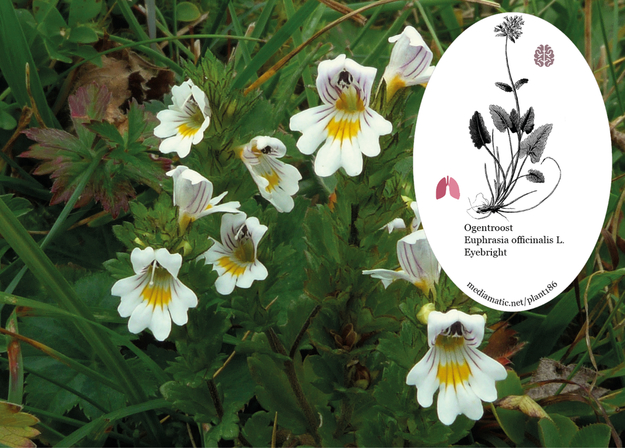Eyebright has a long history of herbal use in the treatment of eye problems and is still in current herbal use. It is important that only the correct forms of eyebright, with glandular hairs on the calyx, are used, since other forms do not possess medicinal virtues. Eyebright tightens the mucous membranes of the eye and appears to relieve the inflammation of conjunctivitis and blepharitis. Its ability to counter catarrh means that it is often used for infectious and allergic conditions affecting the eyes, middle ear, sinuses and nasal passages. The whole plant is anti-inflammatory, astringent, digestive, ophthalmic and slightly tonic. It is taken internally in the treatment of catarrh, sinusitis, hay fever, upper respiratory tract infections etc. As an ophthalmic, an infusion of the plant can be taken internally or used as an eye wash. Alternatively, the diluted juice can be dropped into the eyes. Some caution should be exercised, experimentally it can induce side effects including dim vision. The plant's astringency makes it inappropriate for treating dry or stuffy congestion. The plant can be used externally as a poultice to aid the healing of wounds. Eyebright should be harvested when in flower and can be dried for later use. The dried herb is an ingredient of herbal smoking mixtures, used in the treatment of chronic bronchial colds. A homeopathic remedy is made from the expressed juice of the plant. It is used particularly in the treatment of eye inflammations and colds. Source: https://pfaf.org/
Eyebright
Euphrasia officinalis L.
Find more about this plant on Wikipedia.

Eyebright - Euphrasia officinalis L. Author: Arie M den Toom